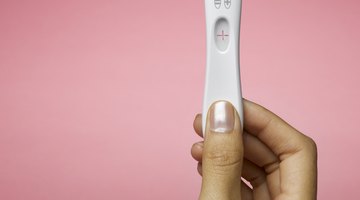Alkaline Phosphatase in Toddlers
Alkaline phosphatase is an enzyme necessary for normal phosphate metabolism found in several different tissues in your body. Circulating blood levels of the enzyme change with age as well as a variety of medical conditions. Understanding the significance of your toddler’s alkaline phosphatase level requires knowledge of the expected normal values in addition to any signs or symptoms present.
Normal Alkaline Phosphatase Levels
Important tissue sites containing alkaline phosphatase include the liver, bone, intestine, kidney and placenta, with bone and liver having the highest concentrations of the enzyme. Alkaline phosphatase blood levels measure the sum of enzyme from all these sites, which vary predictably with age. Growing adolescents have the highest normal levels due to active bone growth, with infant and toddler levels higher than those of adults for the same reason. Although normal ranges can vary somewhat among different laboratories, most children from age 1 month to 3 years have alkaline phosphatase levels from 70 to 250 U/L, according to “Cases in Chemical Pathology.” The different tissue sources of alkaline phosphatase each produce a slightly different molecular form of the enzyme, called an isoenzyme, which can also be measured to help determine the cause of a change in blood levels.
Elevated Alkaline Phosphatase and Disease

What Is a Normal Level of Alkaline Phosphatase?
Learn More
Alkaline phosphatase blood levels rise when a disease involves any of those tissues containing the enzyme. In toddlers, liver diseases such as hepatitis, bile duct obstruction and tumors will result in elevated enzyme levels, as will bone disorders including metabolic bone disease, healing fractures, bone tumors and vitamin D deficiency. Periods of more rapid growth, as well as some medications, can also lead to temporary rises in alkaline phosphatase. A health care practitioner will need to consider your child’s medical history, symptoms, physical examination and results of any additional tests performed to help determine the specific cause of an increased alkaline phosphatase level.
Benign Increases in Alkaline Phosphatase
A short-term elevation of alkaline phosphatase, called transient hyperphosphatasemia, or THP, can occur in 1 to 5 percent of young children, as reported in UpToDate.com in April 2010. THP typically appears in otherwise healthy children under 5 years of age, who have no signs of bone, liver or other significant disease. These children’s alkaline phosphatase levels return to normal within several weeks to months, without any treatment or long-term health effects. In addition, regularly increased alkaline phosphatase levels can run in certain families without indicating the presence of any disease, a finding known as familial benign hyperphosphatasemia.
Low Alkaline Phosphatase Levels

Vitiligo in Infants
Learn More
Mildly decreased alkaline phosphatase levels can be seen with zinc deficiency or malnutrition. Very low levels of alkaline phosphatase occur in a rare genetic disorder called hypophosphatasia, which interferes with normal phosphate metabolism. This disorder is most severe when found in infants less than 6 months of age, causing failure to thrive, high calcium levels, bone deformities and often death. Hypophosphatasia tends to be less severe in older children, but still results in poor growth, bone deformities and fractures. No curative treatment for this genetic disorder is available, but medication, alkaline phosphatase replacement therapy and surgery can sometimes help control the course of the disease.
Related Articles
- “Cases in Chemical Pathology, A Diagnostic Approach, Fourth Edition”; R.N. Walmsley, et al.; 1999
- MedlinePlus; ALP; May 7, 2009
- UpToDate.com; Transient Hyperphosphatasemia of Infancy and Early Childhood; Rima Fawaz M.D., et al.; April 2010
- “Clinical Medicine Insights: Pediatrics”; Elevated Alkaline Phosphatase in Children: An Algorithm to Determine When a “Wait and See” Approach is Optimal; Jaclyn L. Otero, et al.; May 2011











